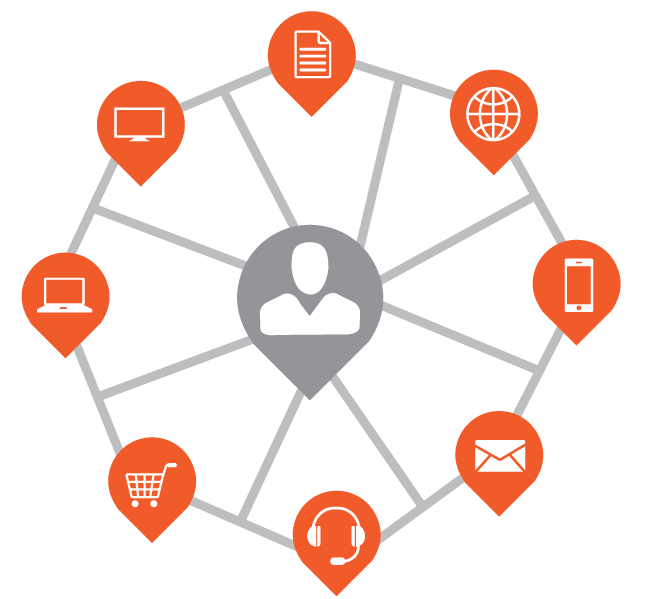Consumer behavior has changed. They’re no longer shopping exclusively in-stores; consumers are researching on desktops, browsing on mobile devices, and perusing on tablets. To adapt to this shift, you need to adopt an omnichannel approach.
Omnichannel differs from multichannel. Multichannel means customers interacting with a brand via more than one channel (online, social media, in-store, etc). Providing an omnichannel experience means uniting how the channels interact with each other, as well as with customers, in a cohesive way — in a way that multiple experiences feel like one. It means that each experience from research to shopping to delivery to post-purchase is continuous and consistent.
SearchCIO defines omnichannel as a “multichannel approach to sales that seeks to provide the customer with a seamless shopping experience whether the customer is shopping online from a desktop or mobile device, by telephone or in a bricks and mortar store.”
Below are 3 omnichannel tips to increase sales.
1. Provide an uninterrupted sales experience
Implementing omnichannel retailing is crucial because omnichannel customers conduct more research and spend more money.
— Ensure the purchase journey is unbroken across each channel because customers may start in one channel (research on mobile), then move to another (purchase on a laptop), and end on yet another (pickup in store).
— Complement the eCommerce and in-person experience by allowing customers to return items purchased online to a physical location. Or if you launch a promotional campaign, allow customers to purchase both in-store and online.
— Embrace mobile technology, which means optimizing the website so the design looks flawless on smartphones and ensuring product information is consistent in store and online because consumers are now using channels simultaneously (browsing reviews on phone while in store).
2. Nurture customer relationships until they are ready to buy
Sync channels so you can market accordingly once you know where your customers are in the sales funnel.
— Engage your customers on their preferred channels: teens are social media savvy, and people on the go prefer to digest information on mobile.
— Connect with potential customers and increase engagement with pop-up shops and trade shows if you don’t have a permanent physical location.
— Use analytics to identify customer buying frequency, shopping habits, and behaviors across each channel.
— Send abandoned shopping cart emails to gently nudge customers and remind them of items they expressed interest in.
3. Provide personalized customer service
Customer service is an important component of the sales experience. By ensuring the customer gets the same quality service regardless of how they reach out, you will ultimately increase customer satisfaction and retention.
— Offer 24/7 customer service across all methods so people can reach you easily whenever they need assistance.
— Ensure the representative on the phone has the same information about customer preferences and purchase history as the employee in store or on live chat.
— Seize opportunities of up selling by emailing suggestions related to past purchases (whether the purchase was in-store or online).
Conclusion
The modern consumer moves across multiple channels — to research, buy, and seek customer support. In response, businesses need to provide a seamless experience across all the channels that consumers are engaging with.
Each piece of the consumer’s experience should be complementary. In our age of convenience, the job falls on the merchant to ensure the shopping experience is effortless for the consumer. Ultimately, the omnichannel approach simply means providing a fantastic customer experience.
